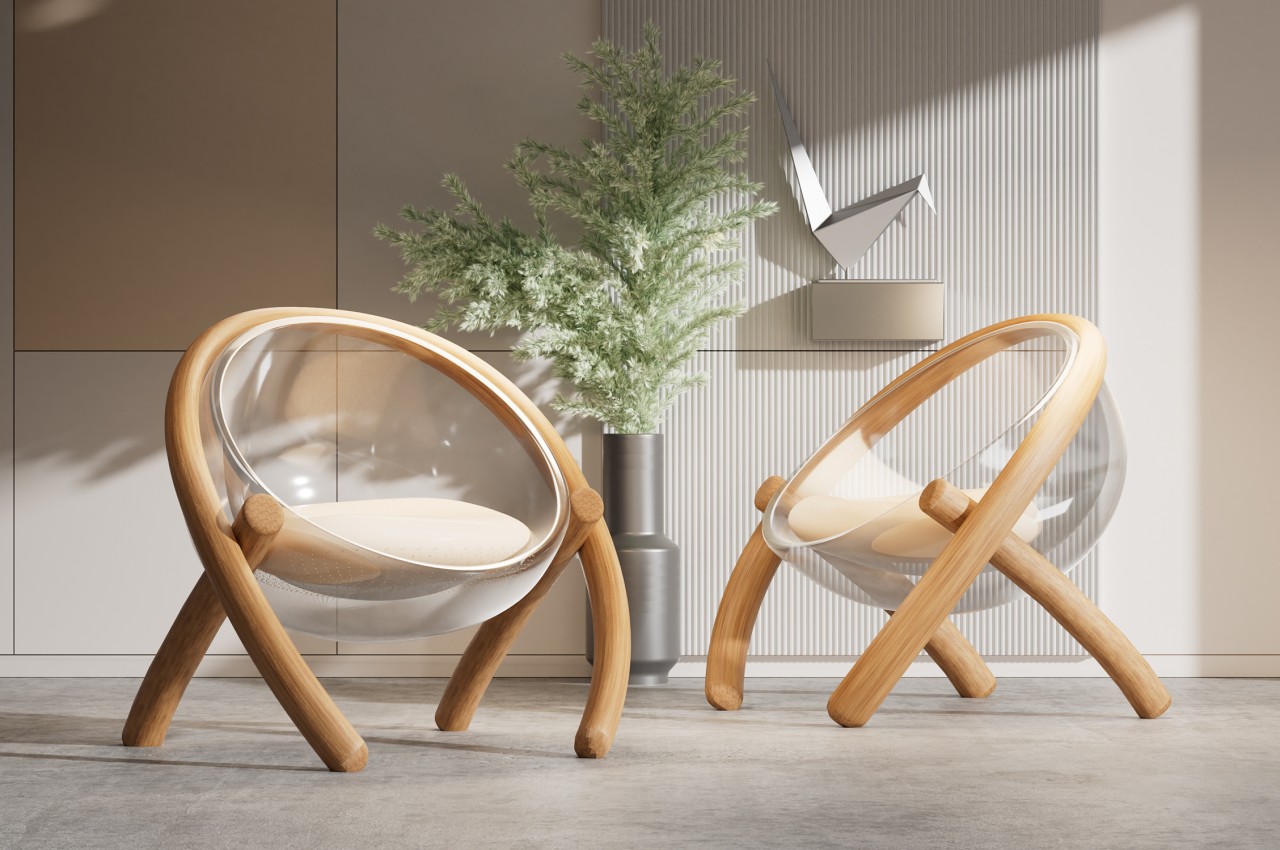
The use of plastic in products has almost become so second nature that we spare no thought about how the material affects the environment in the long run. After all, there are plenty of benefits to plastic, such as its resilience, durability, and affordability, that we easily lose sight of long-term disadvantages. Fortunately, there are also more people who have become aware of this situation nowadays, and they have started to either move away from plastic completely or at least incorporate recycled plastics as much as possible. This chair is one of the latter, and while that in itself isn’t exactly extraordinary, the play of contrasting elements creates a harmonious composition that makes it look not only interesting but also welcoming.
Designer: Xingcheng Zhu
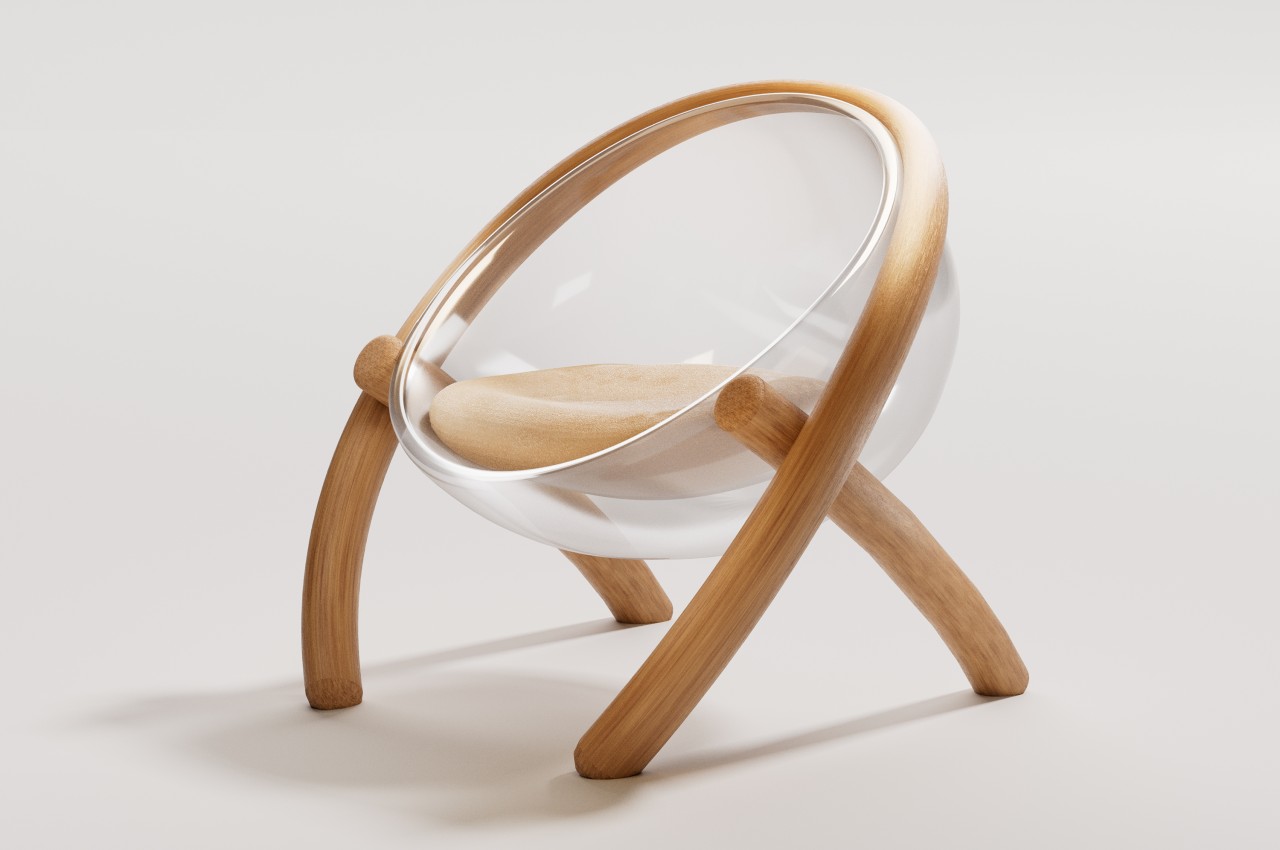
“XOX” might sound like an odd name for a chair, especially since it’s synonymous with a simple yet popular paper-and-pencil game. You immediately see the connection, however, when you view it from an angle and notice the two wooden X’s flanking the half-spherical shape that forms the chair’s seat and backrest. The choice of the name may have been based on that visual, but it also represents the very essence of the chair as a combination of contrasting elements.
While the standard design of a chair involves flat surfaces for the seat and backrest, the XOX Chair employs a hollow sphere that has a portion of it chopped off, forming the cavity for a person to sit inside. This circular shape sits in between the long, tubular legs of the chair, spindly in contrast to the fuller mass of the seat itself. Although the legs are the more visible part of the chair, their simpler and thinner forms draw your eyes immediately to the seat instead.
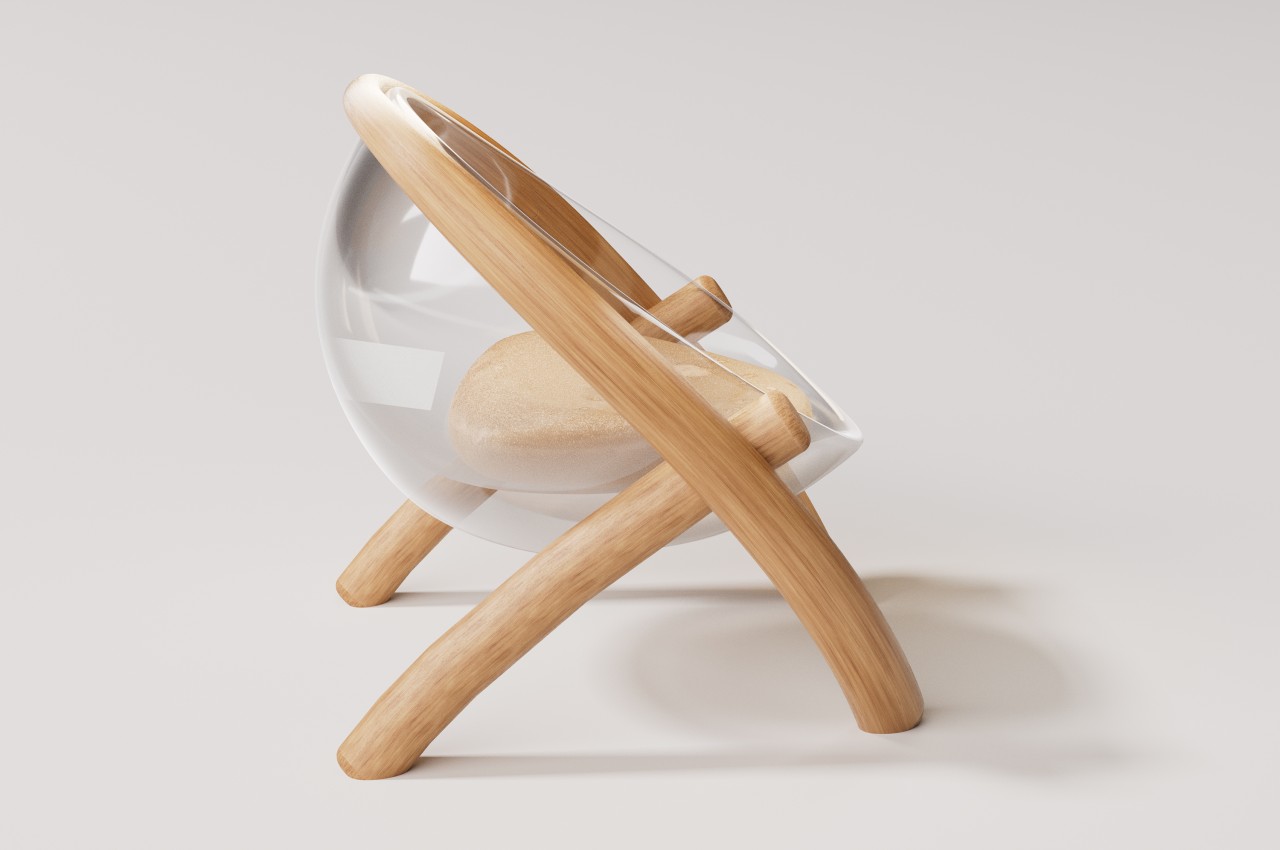
The materials used also contrast and complement each other. The legs are made of wood, a natural material whose grains create minute yet beautiful imperfections that give each piece a unique character. The middle component, however, is made from recycled PET bottles, resulting in a synthetic perfection with almost no blemishes. The seat is also completely transparent, giving it an airy and ethereal imagery that contrasts nicely with the solid and earthy tones of the legs.
This balance of elements yields a design that is both pleasing to look at and comfortable to use. Although it lacks the traditional armrests that add some support and stability to the body, the open spherical shape evokes feelings of openness and spaciousness, as if enveloping the person in protection and warmth. Best of all, it is also a design that is aware of the impact that furniture has on the planet’s health, implementing a sustainable solution that doesn’t compromise aesthetics and functionality in the process.
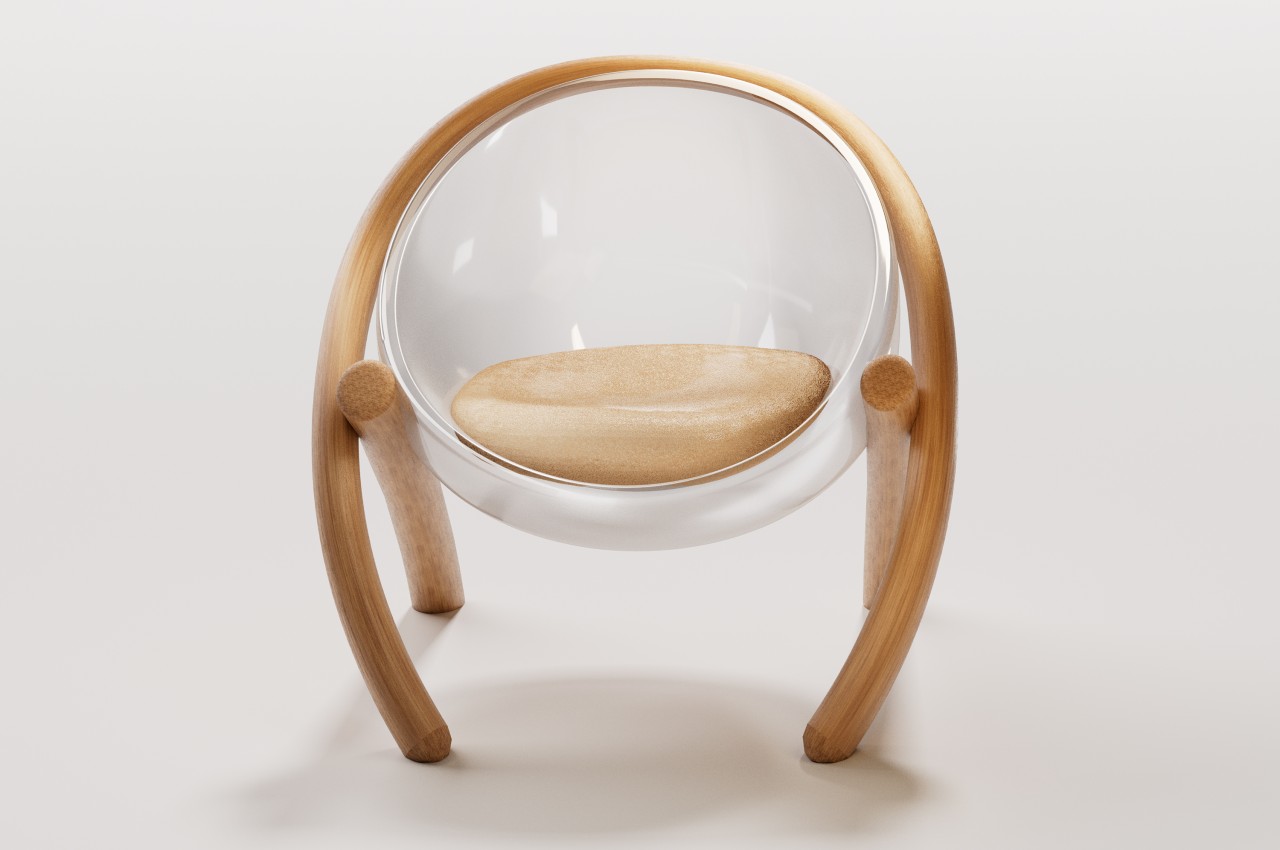
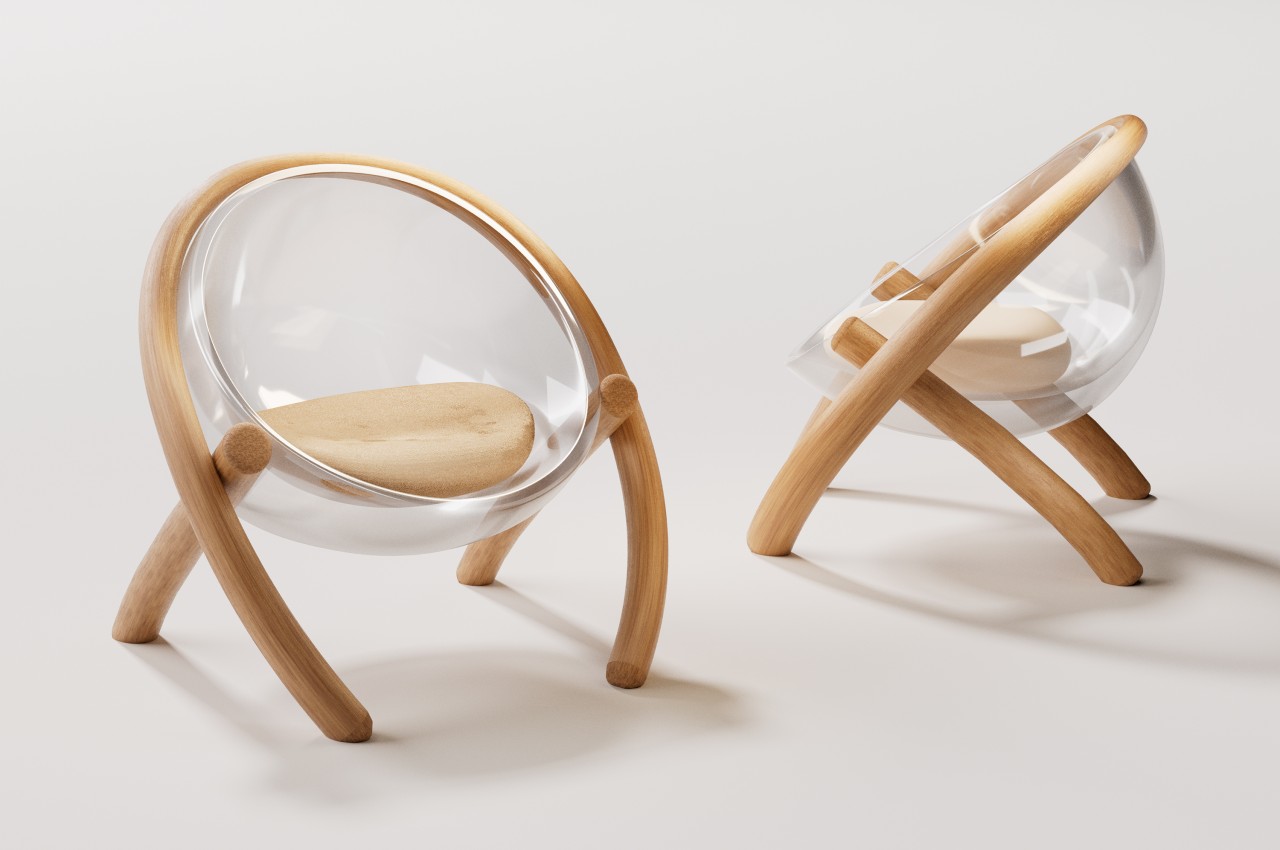
The post This cute chair transforms waste into beauty using recycled plastic bottles first appeared on Yanko Design.